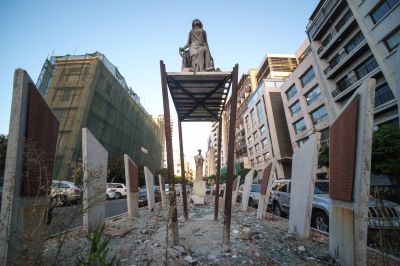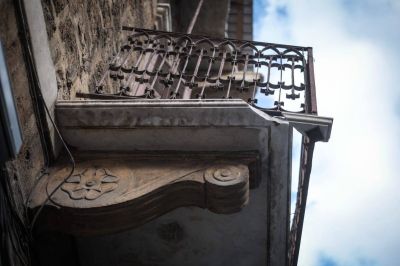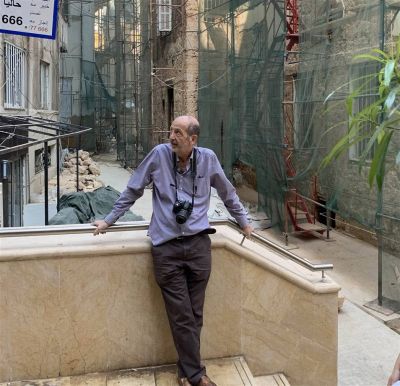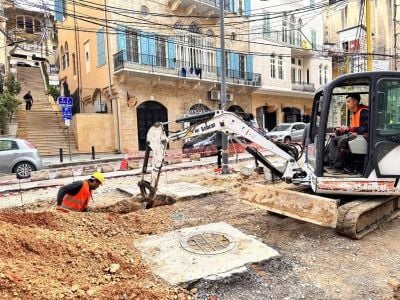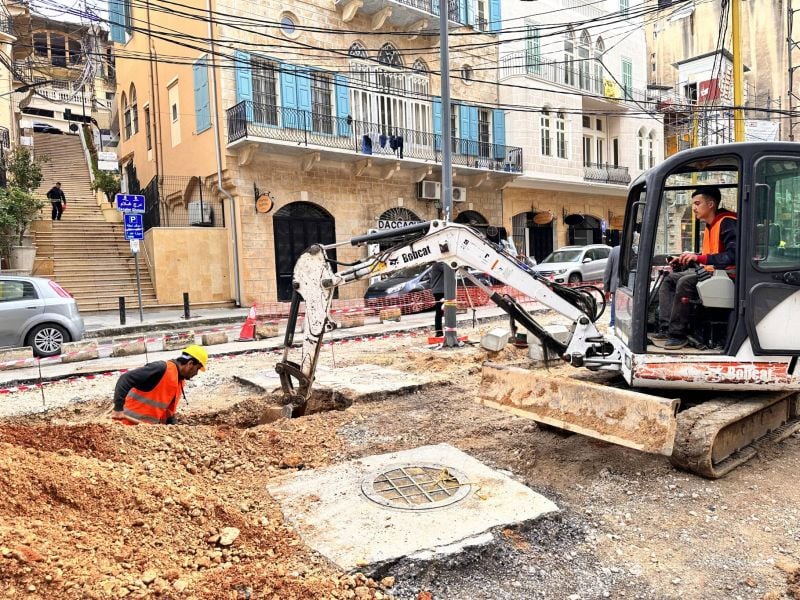
Workers break ground on the Mar Mikhael Piazza project, March 2023. (Courtesy of: Youssef Borsh/Beirut Urban Lab)
BEIRUT — For the past few weeks, excavators have been buzzing throughout the day as construction workers in orange vests toil at what is now the former intersection of Armenia/Gouraud and Pasteur streets.
Curiously, the purpose of the construction is not to fix the water or sewage systems or lay internet cables. This time, the construction is related to something entirely different — a public space project called Mar Mikhael Piazza.
The project is championed by the Beirut Urban Lab (BUL), an interdisciplinary research center based in AUB. The project was envisioned by the late Habib Debs, who passed away in February, and was designed in collaboration with Francis Landscapes.
Cynthia Bou Aoun, the coordinator of the Mar Mikhael Piazza project, explains that the initiative was meant to be implemented in 2021 while the area was undergoing rehabilitation after the port blast.
“We collaborated with the mukhtar, and we had the permits from the municipality, but unfortunately, we had to stop because infrastructure works were planned in the same area,” she said.
Two years in, the municipality informed them that the infrastructure works would not be implemented. They applied for new permits that were finally approved, relaunched the bidding process and started breaking ground.
Mona Fawaz, co-director of BUL and a professor at AUB, explained that the lab's focus on public spaces came in the wake of the blast.
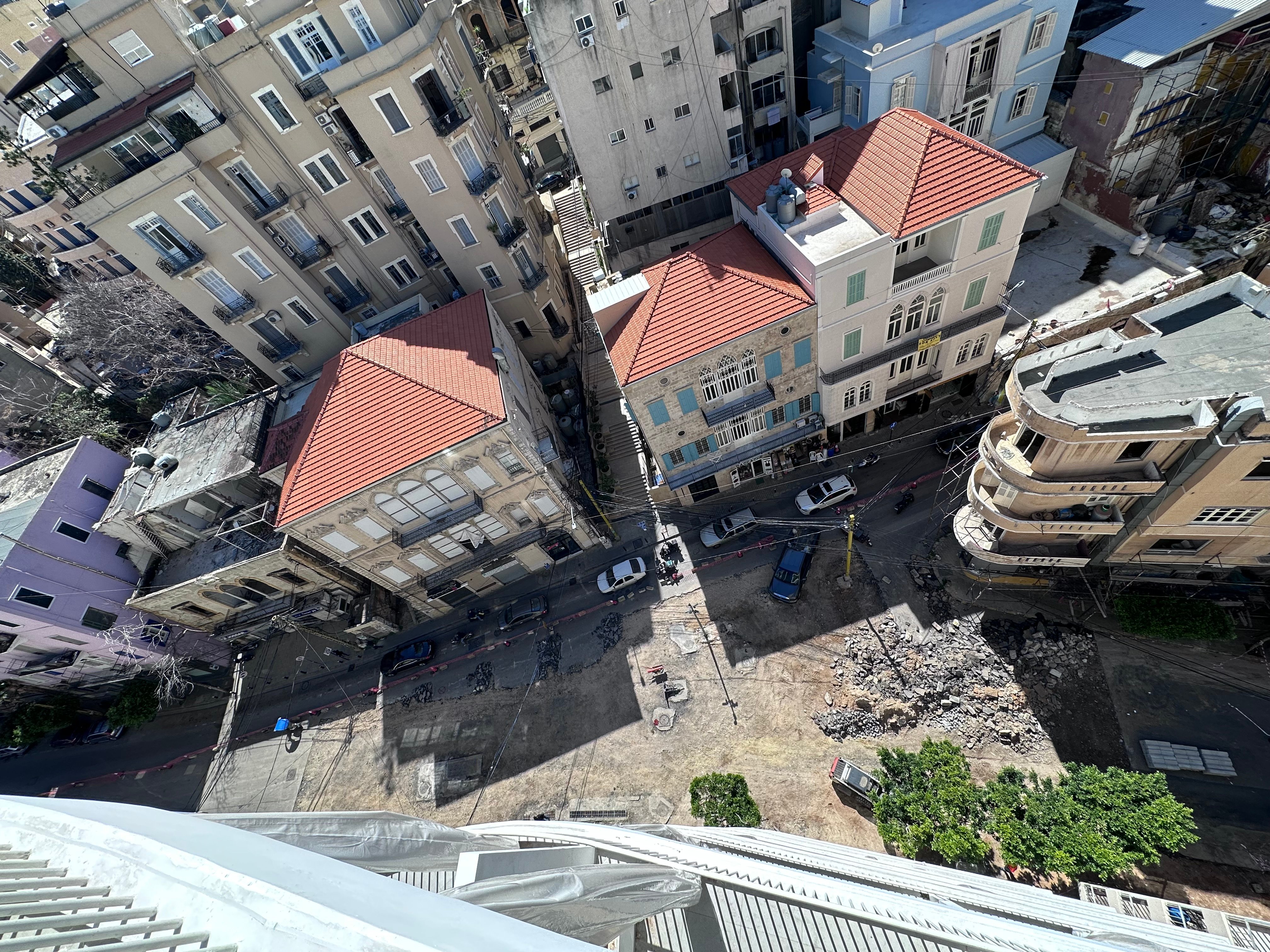 The site of the planned Mar Mikhael Piazza project, March 2023. (Courtesy of: Cynthia Bou Aoun/Beirut Urban Lab)
The site of the planned Mar Mikhael Piazza project, March 2023. (Courtesy of: Cynthia Bou Aoun/Beirut Urban Lab)
With the return of the nightlife scene to the area after COVID-19 closures and the port blast, along with the traffic it brings, long-term improvements to the neighborhood's pedestrian infrastructure became more pressing In came the piazza project.
Construction for the Mar Mikhael Piazza project began in March 2023.
“We are currently installing the water drainage system that will relieve the area from flooding during winter,” said BUL researcher Maria Rajha. “The project is expected to be completed by July 2023.”
“We're also introducing solar lighting, donated by the Lights for Lebanon initiative, a collective of lighting designers whose work seeks to revive communities kept in the dark” by ongoing blackouts, said Bou Aoun.
According to BUL, the project aims to make the neighborhood and the city as a whole more accessible to pedestrians.
More than a beautification project
The plan envisions street lights, benches and greening work, as well as an upgrade of the drainage system. According to a statement released by BUL, once completed, the multi-functional space can host social events.
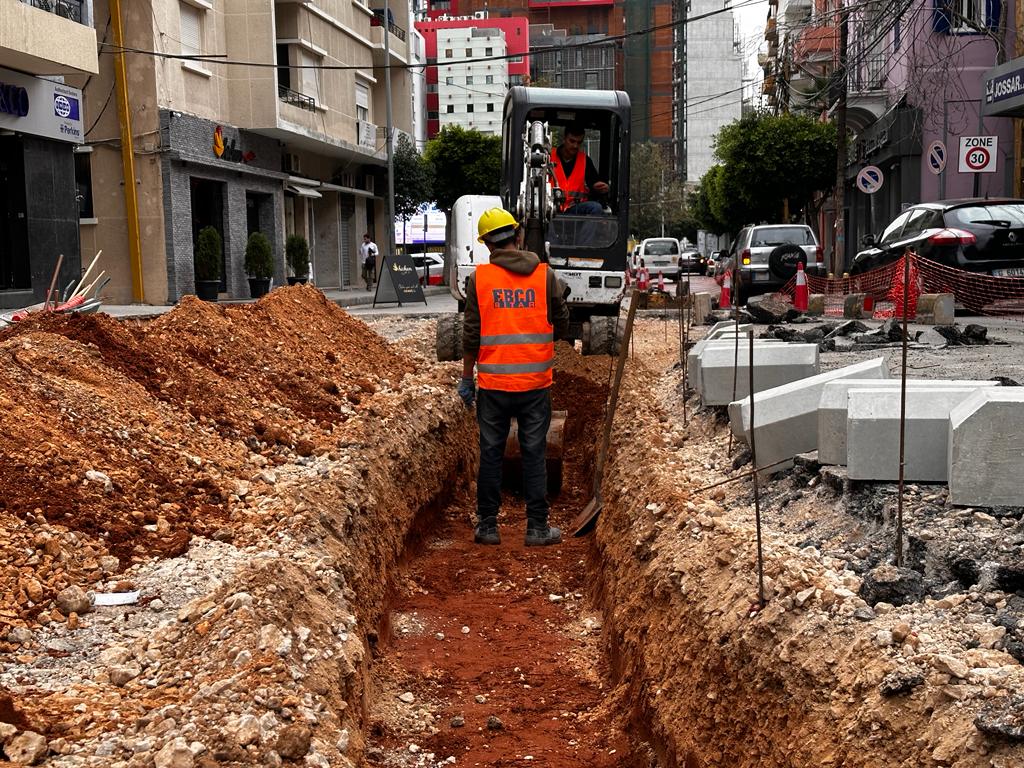 Workers break ground on the Mar Mikhael Piazza project, March 2023. (Courtesy of: Youssef Borsh/Beirut Urban Lab)
Workers break ground on the Mar Mikhael Piazza project, March 2023. (Courtesy of: Youssef Borsh/Beirut Urban Lab)
Bou Aoun was careful to note that this was not a beautification project “where we plant some trees and add a few benches.” Rather, the initiative seeks to disrupt vehicular access into what is a vital artery, to prioritize the needs of pedestrians over those of motorists.
Despite this, Bou Aoun stressed that cars will still be allowed on Armenia and Pasteur streets.
“It will still be a vehicular artery but with pedestrian priority. The roads are currently blocked to implement the works, but they will be reopened,” she assured.
The only difference is that the roads will be narrower to displace street parking and widen the sidewalk to improve walkability. Bou Aoun added that the designs took into account parking needs and spots were added at the beginning of Pasteur street, just a few meters away from the shops.
Traffic experts from the Beirut-based consultancy firm TMS Consult advised the study to assuage fears about traffic issues.
Such a balance is needed in a car-dependent city like Beirut. In 2018, Beirut had 627 cars per 1,000 people, according to research conducted by Lebanese University urban planner Adib Haydar.
Parking lots occupy three times more land in the city than green spaces, with a study published in the journal Smart Cities estimating that street-side parking lots occupy 5.75 percent of Beirut's surface area.
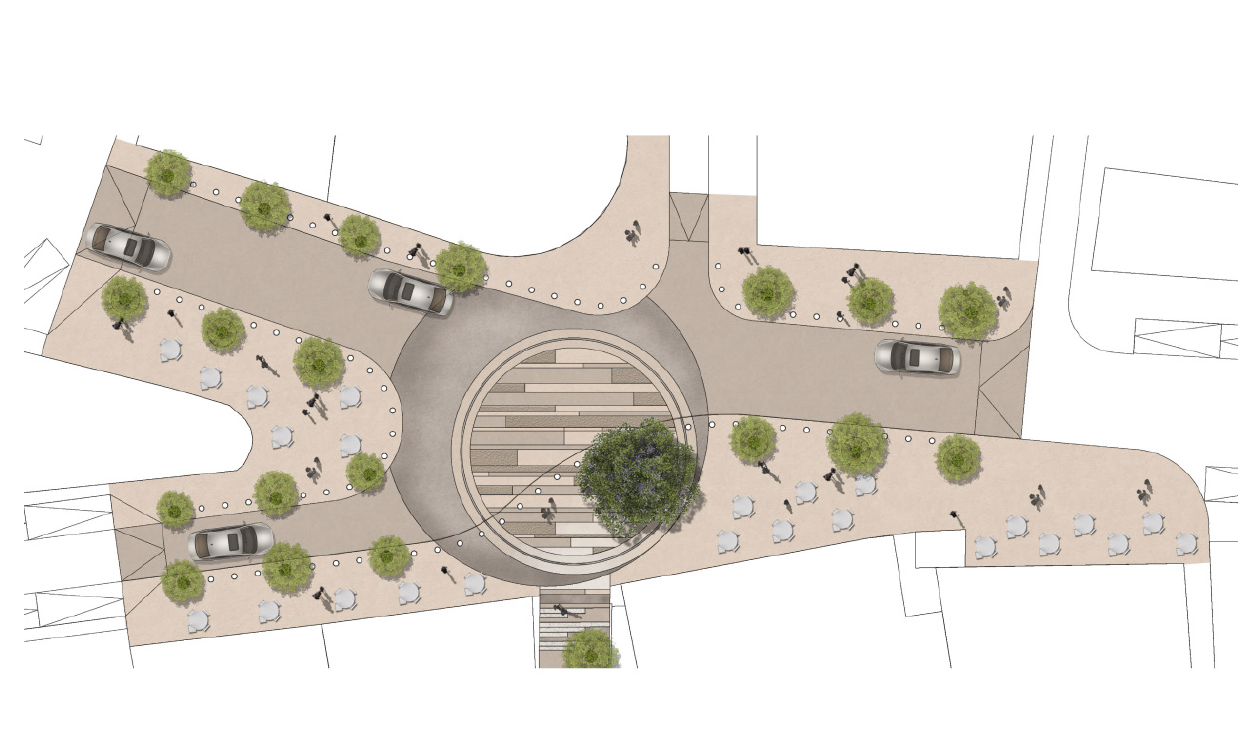 A digital rendering of the Mar Mikhael Piazza project. (Courtesy of: Beirut Urban Lab)
A digital rendering of the Mar Mikhael Piazza project. (Courtesy of: Beirut Urban Lab)
A collaborative project
“The execution of the project has been very collaborative,” Bou Aoun told L’Orient Today, with much of the design done by engaging residents and business owners of the area to better understand their needs.
“In 2020, the BUL team conducted a series of interviews with the residents in the area,” Rajha said. “Their input was directly translated into the design process.”
“Our researchers went on site, listened to what the people had to say and how they imagined this space, and we took all their comments into consideration while designing the square, which is meant to enhance the quality of urban life in this neighborhood” Bou Aoun explained. “Even today, while the square is being implemented, we are on the ground, talking to people, explaining the project and hearing their concerns.”
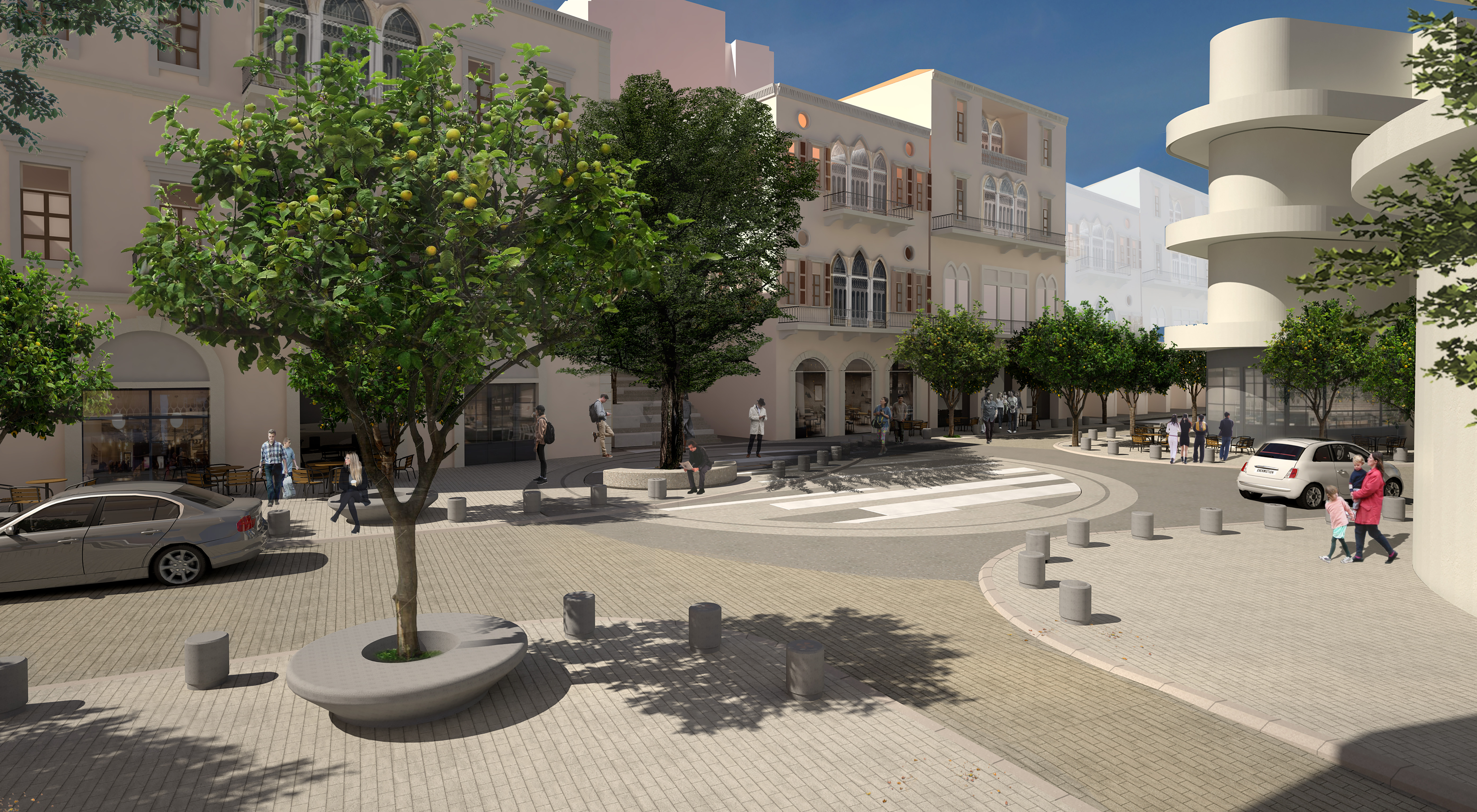 A digital rendering of the Mar Mikhael Piazza project. (Courtesy of: Beirut Urban Lab)
A digital rendering of the Mar Mikhael Piazza project. (Courtesy of: Beirut Urban Lab)
Most of the funding came in the form of donations from Architects for Beirut after the blast, the Fondation de France, UN-Habitat and the Italian Corporation in Beirut (AICS).
A larger movement to make Beirut less hostile to pedestrians
“We're not simply implementing any public space, it's a disruption,” said Fawaz.
“The multi-functional design intervention envisions Mar Mikhael square as an inclusive public space,” Rajha explains, “part of a larger vision called Al-Masar Al-Akhdar (“The Green Spine”) — that invigorates public spaces and urban walkability in the city.”
Al-Masar Al-Akhdar is Habib Debs' counterproposal to the Fouad Boutros Highway running from Charles Malek Avenue to the Mar Mikhael neighborhood. It envisions transforming the proposed highway's footprint into a green axis.
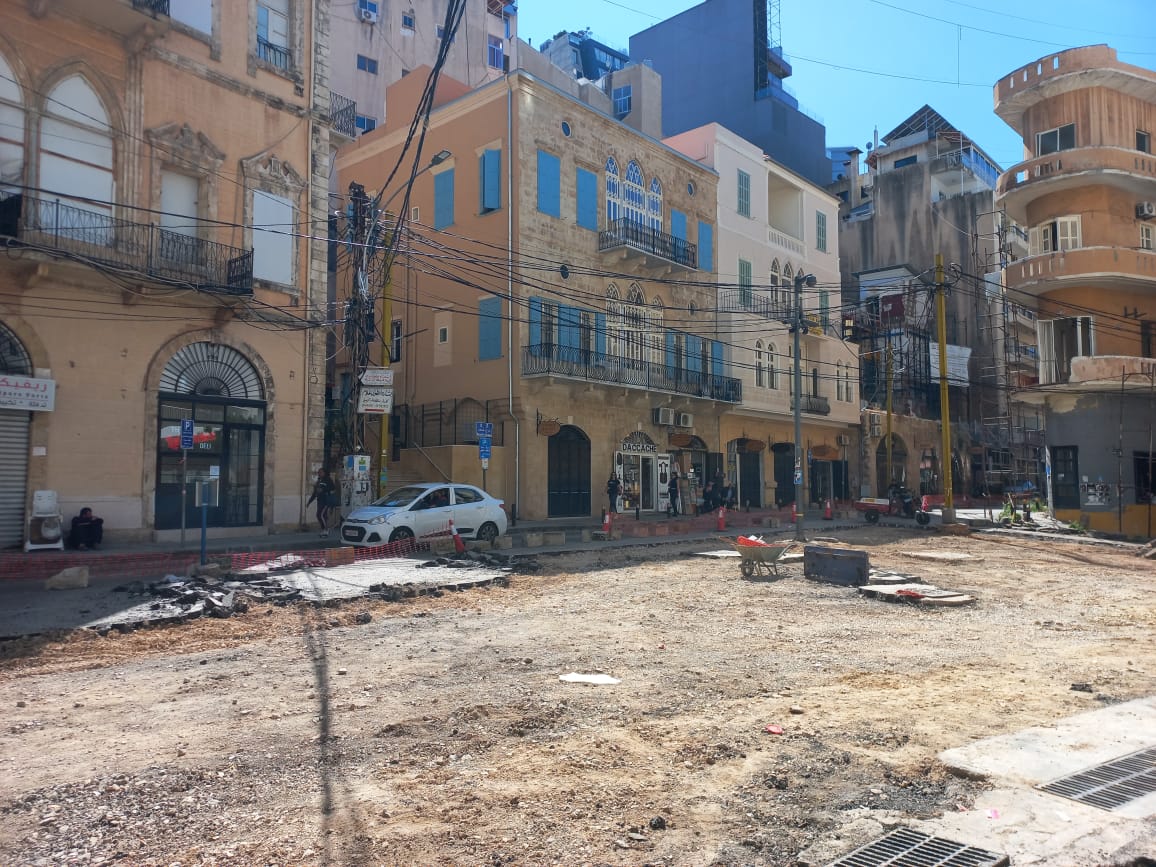 The site of the planned Mar Mikhael Piazza. (Courtesy of: Cynthia Bou Aoun/Beirut Urban Lab)
The site of the planned Mar Mikhael Piazza. (Courtesy of: Cynthia Bou Aoun/Beirut Urban Lab)
Debs envisioned the space's design as a pilot project that could be replicated along the street — he had hoped to fully pedestrianize the area, but Bou Aoun says that would entail impeding car traffic.
“Habib was envisioning how we can extend this square further towards the EDL building [in Mar Mikhael] with its sunken piazza that could be opened to the public and easily accessible,” she said.
The project follows similar public space initiatives in the area and is directly connected to the recently refurbished Gholam Stairs (done by Beirut Heritage Initiative and Francis Landscapes) that lead from the St. George Hospital area to the intersection of Pasteur-Gouraud and Armenia streets.
BUL is coordinating with other civil society organizations wishing to implement public space design interventions, such as the one planned on Pasteur Street where a traffic island divides the road into two. The intervention would remove one of the lanes to the benefit of a wider public plaza with enough space to add benches, trees and a bike rack.
If all goes well, Bou Aoun hopes that this will start a string of public space projects that are part of a broader vision for the stretch of Mar Mikhael between Pasteur Street and the old train station.
Fawaz noted that it is not usually the place of a research center to implement physical projects. She hopes the project serves as a social experiment that sets a previous for “how to get it [change] to happen.”
“And it is actually is happening, which I think is really awesome,” she said.
